North Queensferry School – the war years WWII returning to normality
< Previous - North Queensferry School - WWII Occupation and Evacuation
The end of evacuation
The school remained closed . . .

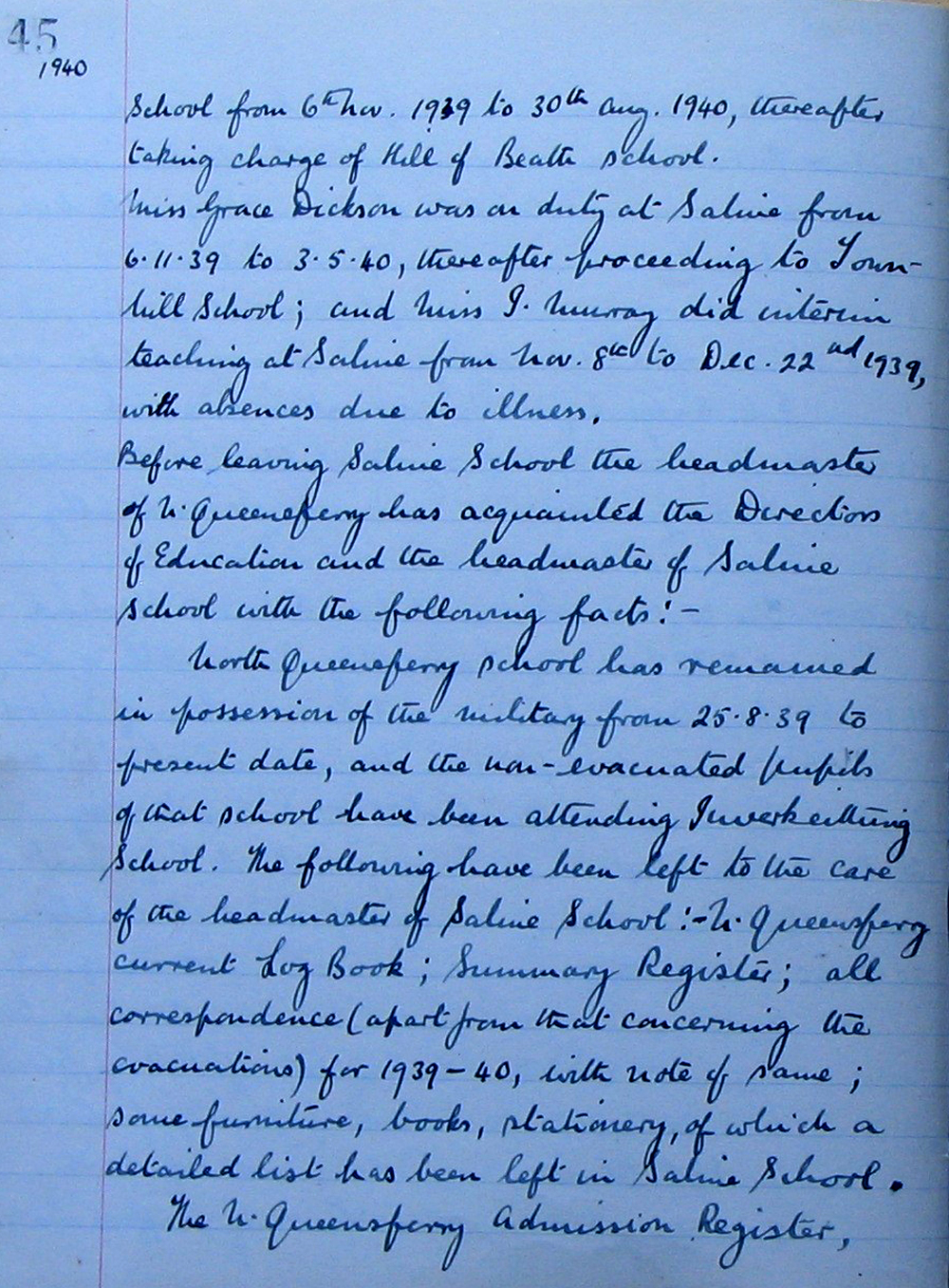
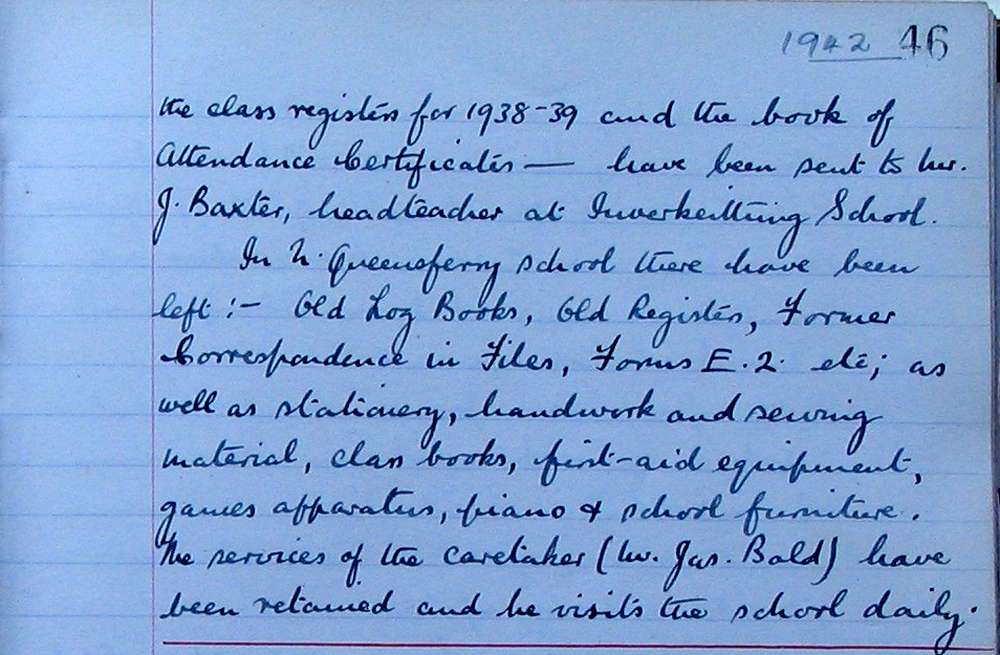
. . . until November 1942
By this time it seems that all of the children were attending Inverkeithing School.
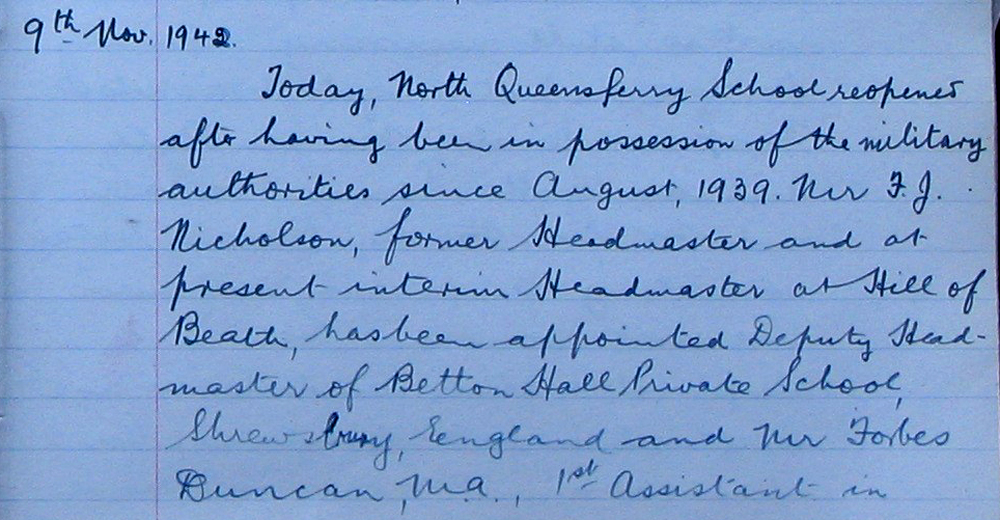
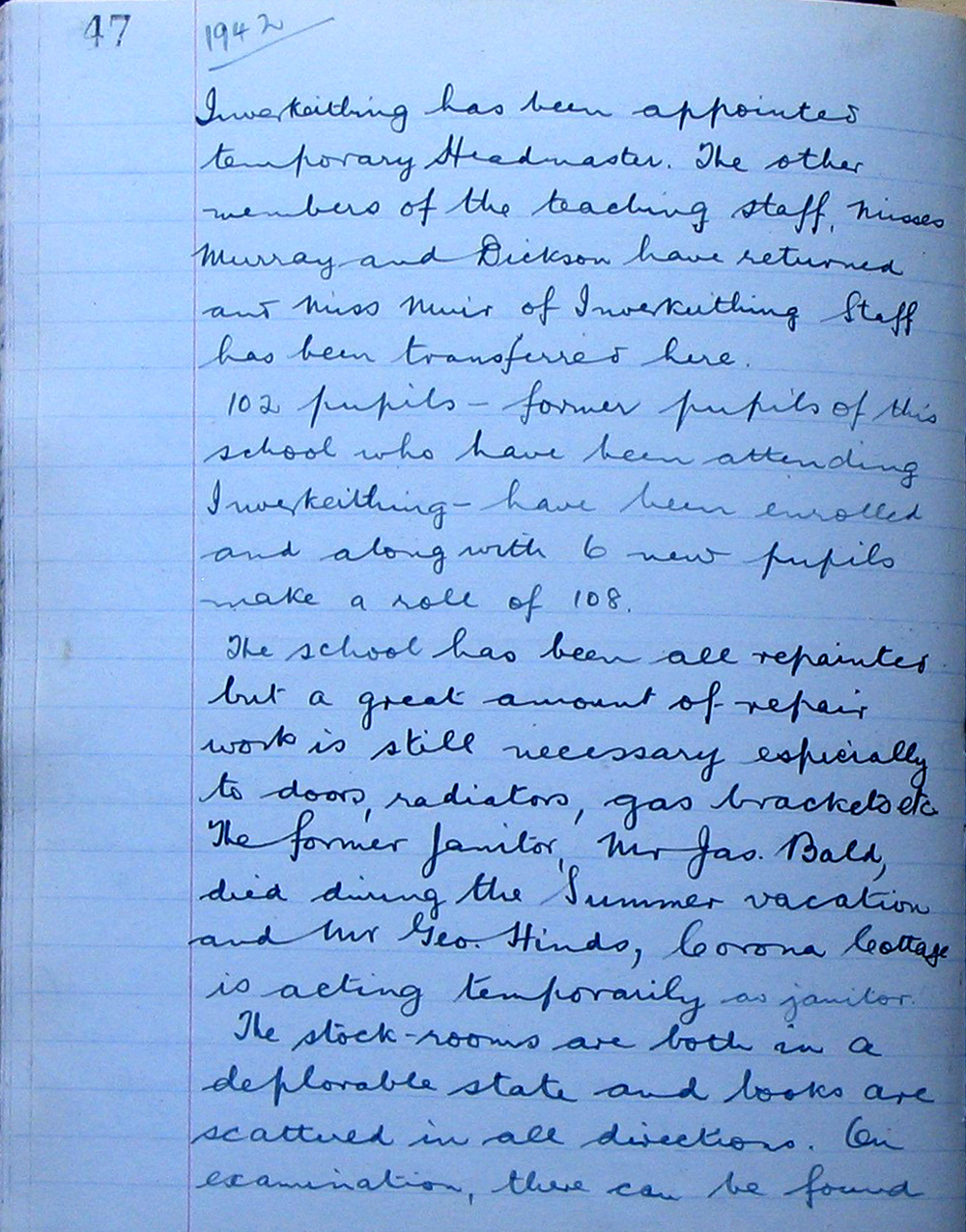
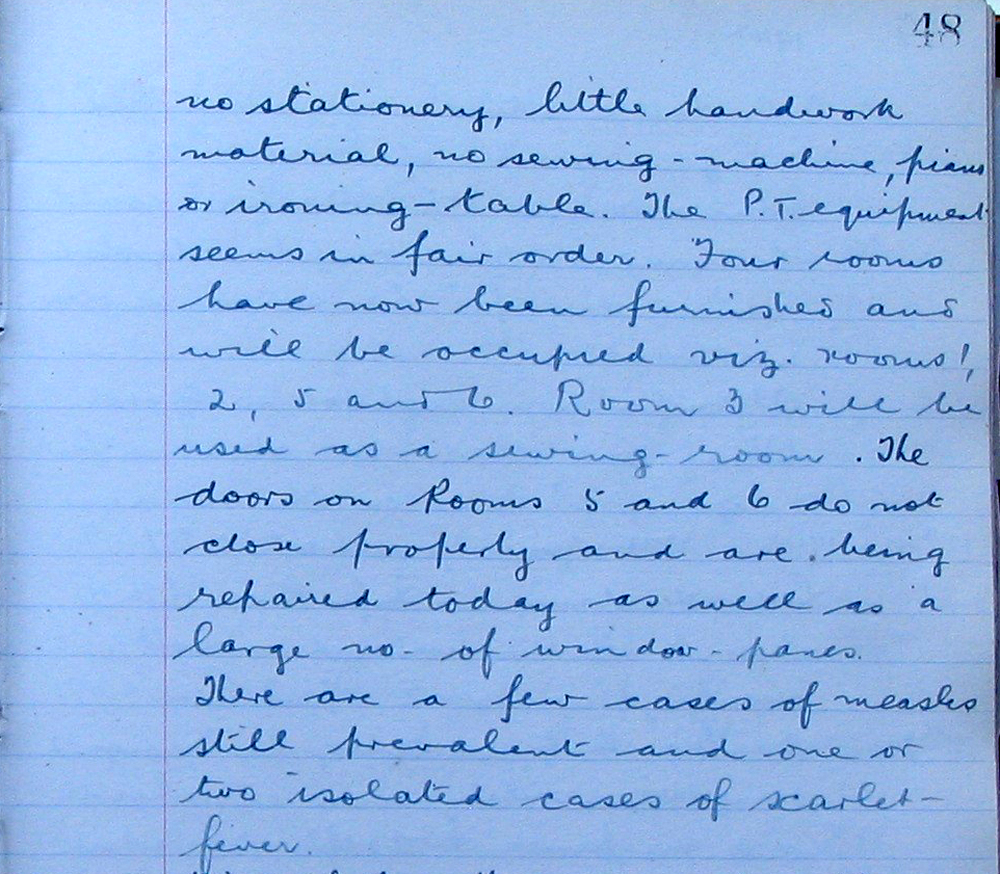
School life then returned to normal, with little disturbance apart from the removal of school railings in 1943. This followed an instruction in Regulation 50 of the Defence (General) Regulations, 1939 to requisition iron and steel railing as a source of scrap metal to supply the war effort.
From Hansard, 1st October 1941:
SCRAP METAL (RAILINGS).
Mr. Harold Macmillan: Local authorities in England and Wales were asked on 11th September to complete a survey of the railings in their areas within six weeks and to schedule those which in their view were unnecessary. They have been asked to interpret “unnecessary” so as to exclude from scheduling railings which in their opinion serve a useful function and which, if removed, would require to be replaced by some other material. In particular, railings required for safety purposes or to prevent cattle straying, and railings of historic interest or special artistic merit will not be scheduled. The requisition of railings will commence as soon as possible after these schedules have been received.
The scheme will be extended to Scotland shortly, as soon as the necessary arrangements are completed.
[ https://api.parliament.uk/historic-hansard/commons/1941/oct/01/scrap-metal-railings ]
The scheme reached North Queensferry School on May 17th 1943
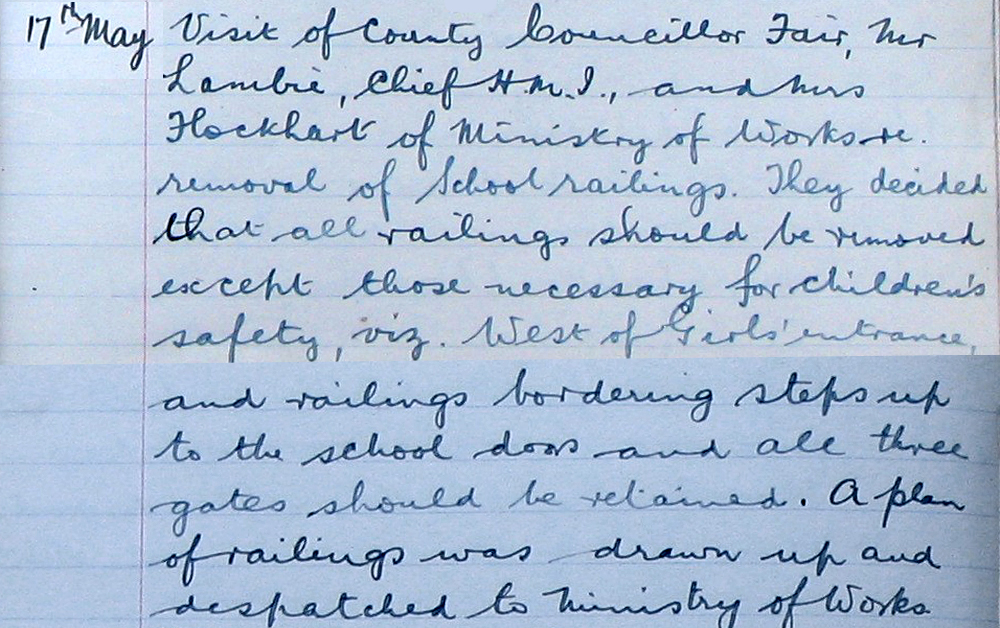

Although there have been suspicions that the removal scheme was largely a propaganda exercise, this (edited) extract from Hansard indicates the view from 1943 – just after the railings were removed from the school – that the scrap metal was a valuable part of the war effort.
[ https://api.parliament.uk/historic-hansard/lords/1943/jul/13/requisitioned-railings ]
“ . . , by September, 1941, we had to stop importing scrap from America, in order to save shipping space and also because the Americans wanted scrap for themselves.
. . . Lord Beaverbrook was at the Ministry of Supply. He suggested that the Minister of Works should take over the collection for the Iron and Steel Control.
It was decided that the question was of paramount importance because we had no scrap available at that time to compare with what we had been bringing over from America.
We have also to remember that the collection of scrap in this country helps enormously in the saving of shipping space, as one ton of scrap saves approximately two tons of fuel which would have been necessary in conjunction with the 3¼ tons of ore which each ton of scrap replaces.”
In November 1943, the school hours were adjusted to comply with blackout regulations. School started at 9.30

The End of the WWII
The School closed for two day’s holiday on Tuesday 8th May 1945 – V.E. day to mark the end of WWII in Europe.

The school closed for the summer holidays from 13th July . . .

. . . to September 4th, so there was no school event to mark V.J. day on 15th August 1945.

Post War years
It is not clear when the school railings were restored, but there were several rounds of improvements to the school.
Electric light and oil-stoves for the dining room in February 1947 . . .

. . . followed by a hot-water system in July 1947

The [air-raid] shelters were removed from the playground in August 1947
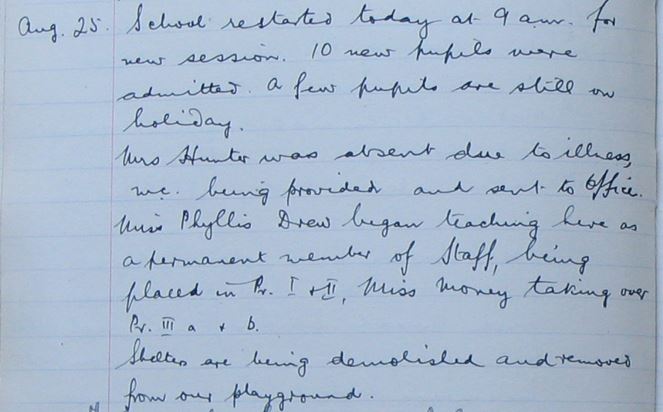
1948 saw the purchase of a wireless . . .

. . . and an electric gramophone

Playground repairs were carried out in February 1949

and again in December 1950
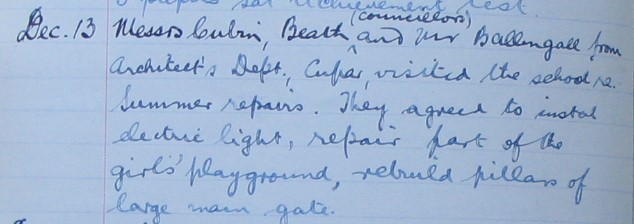
More than seventy years later the “new school” is still going strong.
< Previous - North Queensferry School - WWII Occupation and Evacuation
Boyd Williamson
November 2021
top of page
